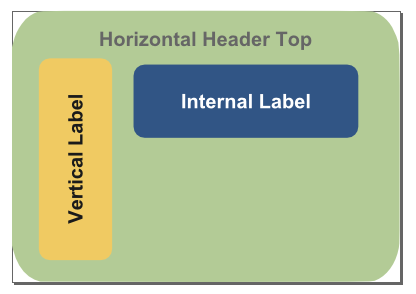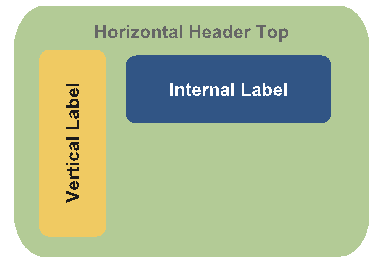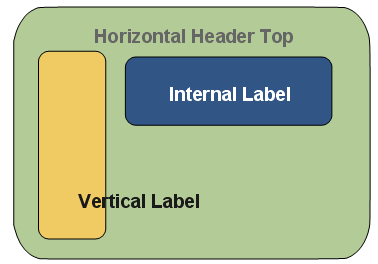 Our Own Approach is Adaptive and Incremental
Our Own Approach is Adaptive and Incremental
It is gratifying to see the emergence of the term semantic enterprise, with much increased attention and commentary. But, similar to different styles and patterns in software programming, there is not a single (nor best, depending on circumstance) way to approach becoming a semantic enterprise.
In this piece I contrast two styles. The more traditional and familiar one is comprehensive, complete and “engineered” in its approach. The second, and emerging style, is more adaptive and incremental. While Structured Dynamics is a proponent and thought leader for the adaptive style, the use and applicability of either approach is really a function of objectives and circumstances. The choice of approach depends on use case, and should not be a dogmatic one.
Any time a contrast is posed, one should be on guard about setting up a rhetorical strawman. There may perhaps be a bit of this flavor in this article; if so, it is unintended. It is probably best to realize that there is a gradient — or spectrum — of possible approaches between these contrasting styles. The real message is to understand these differences such that you can comfortably place your own organization at the right points along this spectrum.
A Spectrum of Advantages and Differences
The general idea of semantics in the enterprise preceeds the use of the term, having been somewhat captured before by the ideas of enterprise application integration, enterprise information integration and other concepts even related to data federation and data warehousing stretching back to the 1980s. However, as a specific label, we can look back to the first mentions in the late 1990s and more concerted attention beginning from about 2002 or so onward [1]. As another indicator, since 2005 the Semantic Technology Conference has given specific prominence to the enterprise [2].
Throughout this period, the sense from academic papers, many vendors, and most pundits [3] has been on things like automated reasoning, machine-aided decision making, aspects of artificial intelligence, and so forth. The general tone is often framed as “revolution” or “massive changes” or something “entirely new.” If you are a consultant or software/implementation vendor — especially where VC money is backing the venture with hopes for big returns and home runs — it may make cynical sense to sell such large and costly change.
I believe there are circumstances where the Semantic Enterprise writ this large may make sense and be financially justified. But, this kind of “big change” view has also seen relatively few visible (or successful) deployments. It has colored what it means to be a semantic enterprise. And, I believe, it has weakened market credibility by perhaps overpromising and underdelivering. The conventional view of what it is be a semantic enterprise deserves to be balanced.
So, as we balance this understanding of the semantic enterprise to one that is more nuanced, we can contrast the characteristics of the two apposite styles as follows:
| Characteristics of the Comprehensive, ‘Engineered’ Style |
Characteristics of the Adaptive, Incremental Style |
|
|
Note we have labeled the conventional approach as the “comprehensive, engineering” style; its contrast, and the one we position more closely to, is the “adaptive, incremental” style.
[Others have posited contrasting styles, most often as “top down” v. “bottom up.” However, in one interpretation of that distinction, “top down” means a layer on top of the existing Web [8]. On the other hand, “top down” is more often understood in the sense of a “comprehensive, engineered” view, consistent with my own understanding [9]. Yet no matter which characterization, neither captures what I feel to be the more important considerations of mindset, logic and premise.]
Though the table above contrasts many points, I think there are two main distinctions to the adaptive approach. First, it firmly embraces the open world assumption. OWA is key to an incremental, “learn as you go” deployment that is also well suited to incorporation of external information. The second main distinction is to leverage and build from existing assets.
A Spectrum of Applications
Yet as noted in the opening, which of these approaches makes better sense depends on circumstance. One aspect of circumstance is available budget and deployment times for pilots or proofs-of-concept. Another aspect, of course, is the planned use or application for the deployment.
These are by no means hard distinctions, but in general we can see these contrasting approaches applying to the following uses:
| Applications and Uses for the Comprehensive, ‘Engineered’ Style (i.e., more CWA driven) |
Applications and Uses for the Adaptive, Incremental Style (i.e., more OWA driven) |
|
|
A critical distinction is the nature of the enterprise itself. “External-facing” enterprises or functions that want or need to incorporate much external information (say, marketing or competitive intelligence) are advised to look closely at the adaptive approach. Organizations that have more complete control over their circumstances should perhaps focus on the conventional approach.
Adoption Thresholds and Risks
In previous writings I have pointed to the manifest benefits that can accrue to the semantic enterprise [see, esp. 10]. But we also have witnessed nearly a decade of promotion for semantics in the enterprise, with perhaps a lack of progress in some areas or unmet promises in others. These raise questions and skepticism of the real eventual costs and benefits.
I believe some of this skepticism is inherent with anything new — the general IT fatigue from what the current “next great thing” might be. But I also believe that some of this skepticism results from an approach to semantics in the enterprise that is both lengthy to deploy and high cost.
The key advantage of the adaptive, incremental approach is that the whole IT game in the enterprise can change. An open world approach enables adoption as it proves itself and as budgets allow. Commitments made under this approach have, in essence, permanent value. Past fears and concerns about making “wrong” bets no longer apply. With learning, targets can be re-adjusted, structure re-defined and applications re-focused, all as new discoveries and broadening scope dictate.
This does not make the adaptive approach better than the conventional one. But, it does make it less risky and, well, more adaptive.
[7] We use a basis in description logics for defining the roles and splits in schema and instances. As we define it:












 I just came across a VC blog pondering the value to a start-up of operating in “
I just came across a VC blog pondering the value to a start-up of operating in “ This
This